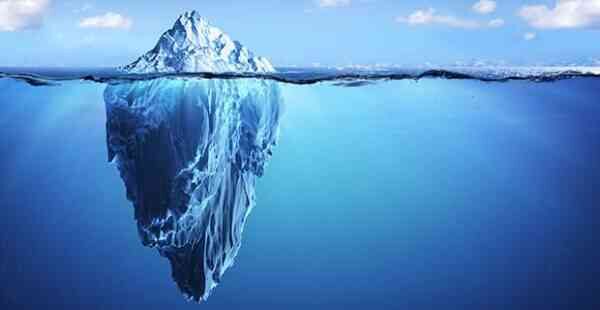Despite the fact that they can pose a serious danger to ships, icebergs are beautiful and amazing. As there are no two identical snowflakes in the world, so there are no two identical icebergs in it – they are all unique, and sometimes nature creates such bizarre shapes that one can only marvel at this beauty. True, few people have a chance to admire it live, since icebergs mostly drift in latitudes where there is very little permanent population.
Interesting facts about icebergs
- About 90% of the total volume of an iceberg is always under water.
- The density of an iceberg is about 10% lower than that of sea water, which is why it stays on the surface until it melts.
- On some large and old icebergs, drifting research stations have been located for years, where scientists work.
- Icebergs are formed as a result of the breakaway of a large block of ice from ice shelves in the Arctic and Antarctica (interesting facts about Antarctica).
- Interestingly, these floating ice mountains can cover vast distances. For example, icebergs from the Arctic reach almost to Bermuda, located at a distance of 4000 km from the place of their formation.
- In the modern world, there are projects involving the use of icebergs to supply clean water to the arid regions of the planet.
- The life span of icebergs can be many decades.
- Huge blocks of ice floating in the ocean pose a danger to navigation. Everyone knows the tragic fate of the English passenger liner Titanic, which collided on April 14, 1912 with a huge iceberg. About 1500 people died in this disaster. Shortly after this tragedy, the International Ice Patrol was created, which monitors the movement of icebergs and warns ships of possible danger. This service is funded by 17 countries.
- Some icebergs are huge. For example, in 2000, a giant of more than 10,000 square kilometers broke away from the Ross Glacier in Antarctica.
- Sometimes Antarctic icebergs can be seen near the Brazilian city of Rio de Janeiro, that is, at a distance of more than 5000 km from the coast of Antarctica (interesting facts about Rio de Janeiro).
- Interestingly, since the beginning of the work of the ice patrol in the North Atlantic, not one person has died from a collision with icebergs.
- Icebergs are mostly either white or bluish, but there are also soft pinks, especially in the Southern Ocean.
- The height of icebergs sometimes reaches 30-35 meters, which is comparable to the height of a 10-story building.
- Because icebergs can damage oil rigs, some oil companies monitor and tow them. Sometimes blocks of ice weighing up to 3-4 million tons are moved in this way.
- About 100,000 icebergs are constantly floating in the coastal waters of Antarctica.
- In terms of fresh water content, all icebergs simultaneously existing in the World Ocean surpass all rivers and lakes combined (interesting facts about the hydrosphere).
- On November 12, 1956, the American merchant ship Glacier discovered a record-breaking iceberg in the South Pacific Ocean, 335 kilometers long and up to 97 kilometers wide. This is more than the size of the whole of Belgium.
- A table-shaped iceberg differs from a pyramidal iceberg by a flat and relatively even top. Such icebergs are easily mistaken for islands, especially at high latitudes, and this has happened more than once.
- The white color of the iceberg speaks of its youth. As it ages, it turns blue or green, as the air in it is partially replaced by drops of water.
- A Canadian company produces drinking water from melted pieces of icebergs that are fished off the coast of Newfoundland.
- For safety reasons, icebergs are marked with bright colors, monitored by satellites and radio beacons are dropped on them from aircraft to track their movement.
- Even an old iceberg drifting in the sea for years can melt very quickly if it is carried by the current to warmer latitudes.
- Northern icebergs are much more dangerous than southern ones, as they have a habit of descending to latitudes where the main transoceanic routes lie.
